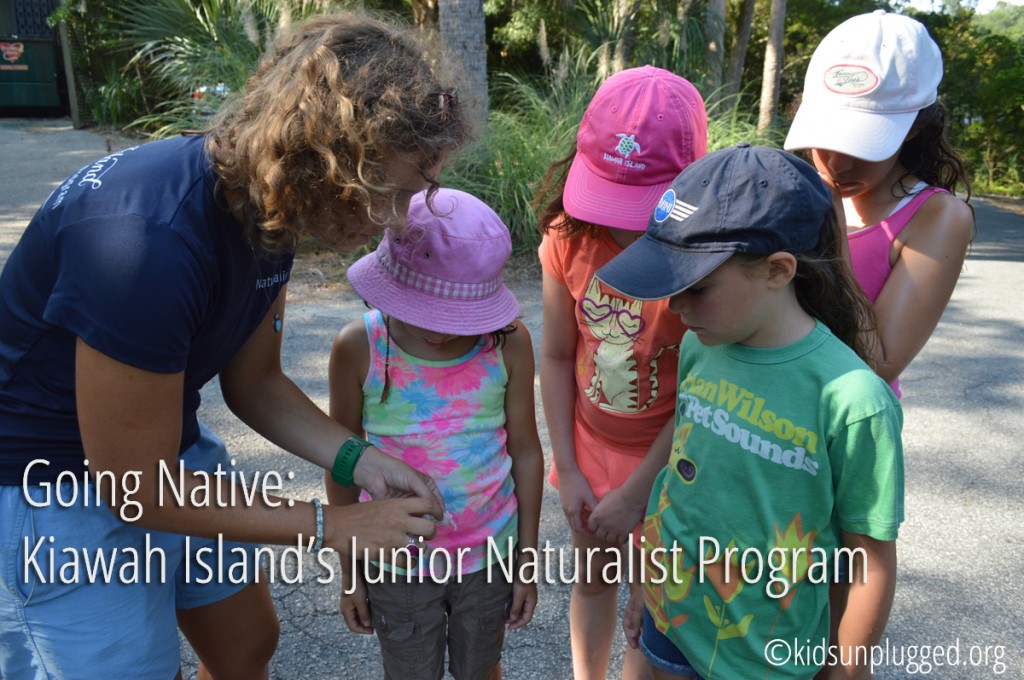
During our recent stay on Kiawah Island, my girls spent an engaging couple of hours at the Night Heron Nature Center participating in one of their Junior Naturalist classes. Kids ages 7 through 12 who are visiting the island can participate in any of the center’s five classes on an individual basis. Those who complete all of them earn the title of Kiawah Island Nature Program Jr. Naturalist. Either way, the classes are a great way for kids to immerse themselves in the island’s natural surroundings and learn about the plants and animals that are at home within the island’s diverse ecosystems.
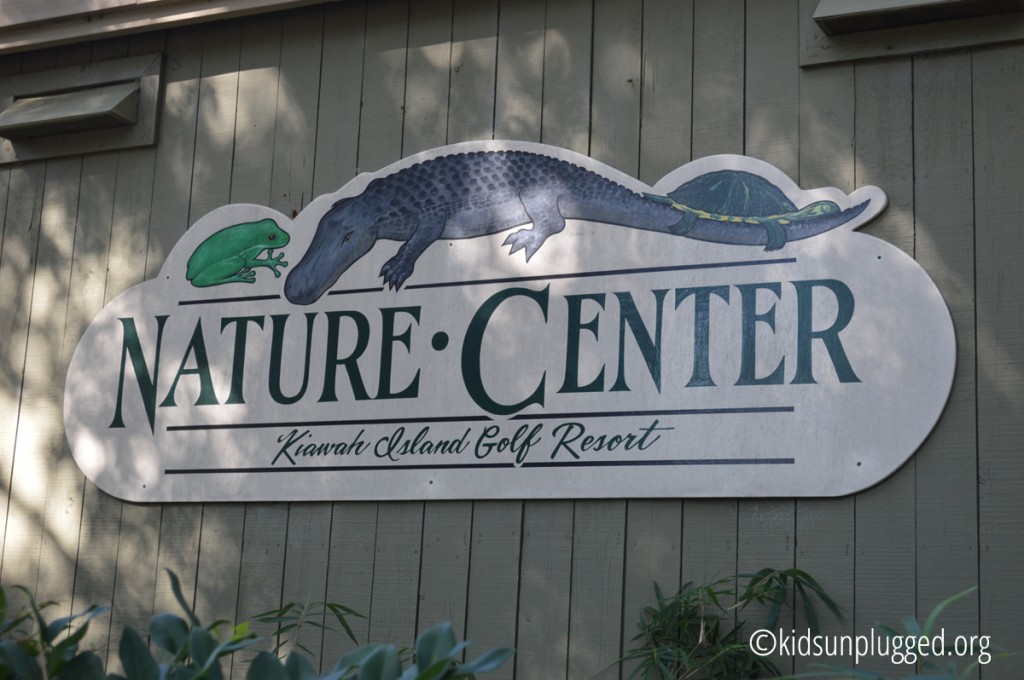 Kiawah Island’s Nature Center is nestled within an area called Night Heron Park, the island’s 21-acre recreational epicenter. Night Heron Park is home to a bounty of activities and features two beautiful pools, basketball and volleyball courts, soccer fields, nature trails with fitness stations, and easy access to the island’s gorgeous beach. The park is also home to Kamp Kiawah, a popular children’s program offering several sessions each day for kids ages 3-11. Finally, the Nature Center itself is serves as the main hub for Kiawah Island Recreation. Resort guests can call or visit the Nature Center to get information about and register for the myriad outdoor activities available around the island. Rent bikes, sign up for a guided kayak tour, register for a birding walk or reserve a sunset dolphin cruise–the possibilities on Kiawah are endless!
Kiawah Island’s Nature Center is nestled within an area called Night Heron Park, the island’s 21-acre recreational epicenter. Night Heron Park is home to a bounty of activities and features two beautiful pools, basketball and volleyball courts, soccer fields, nature trails with fitness stations, and easy access to the island’s gorgeous beach. The park is also home to Kamp Kiawah, a popular children’s program offering several sessions each day for kids ages 3-11. Finally, the Nature Center itself is serves as the main hub for Kiawah Island Recreation. Resort guests can call or visit the Nature Center to get information about and register for the myriad outdoor activities available around the island. Rent bikes, sign up for a guided kayak tour, register for a birding walk or reserve a sunset dolphin cruise–the possibilities on Kiawah are endless!
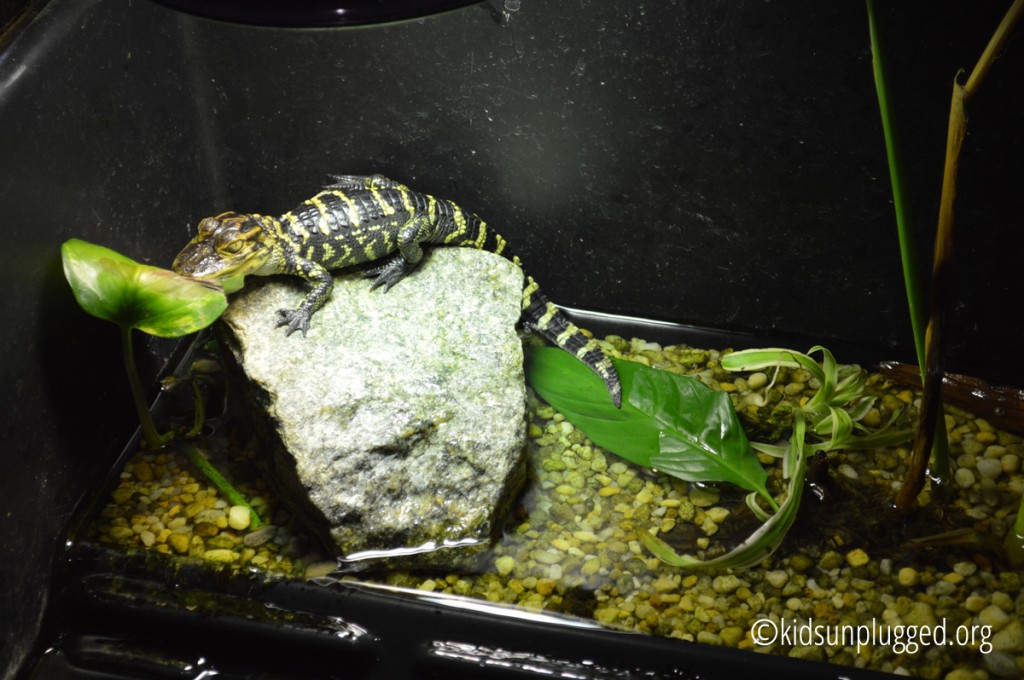 A quick note about the Heron Park Nature Center—a destination in itself, the nature center is home to several exhibits of local wildlife, educational displays about the island’s various ecosystems, and plenty of information about conservation and the island’s flora and fauna in general. Even if you’re not there to participate in a program, it’s a great place to spend some time learning about the island. And the great selection of cool Patagonia stuff in the store there doesn’t hurt!
A quick note about the Heron Park Nature Center—a destination in itself, the nature center is home to several exhibits of local wildlife, educational displays about the island’s various ecosystems, and plenty of information about conservation and the island’s flora and fauna in general. Even if you’re not there to participate in a program, it’s a great place to spend some time learning about the island. And the great selection of cool Patagonia stuff in the store there doesn’t hurt!
We arrived at the Nature Center late one steamy afternoon and met Juliana who would be the teacher for that day’s class. “Going Native” was a program that would teach the kids all about the Native Americans who once inhabited Kiawah Island and the natural island resources they used for their survival. The Jr. Naturalist classes are a 1 ½ hour drop-off program, but because I wanted to feature the activity here, I opted to tag along with my girls.
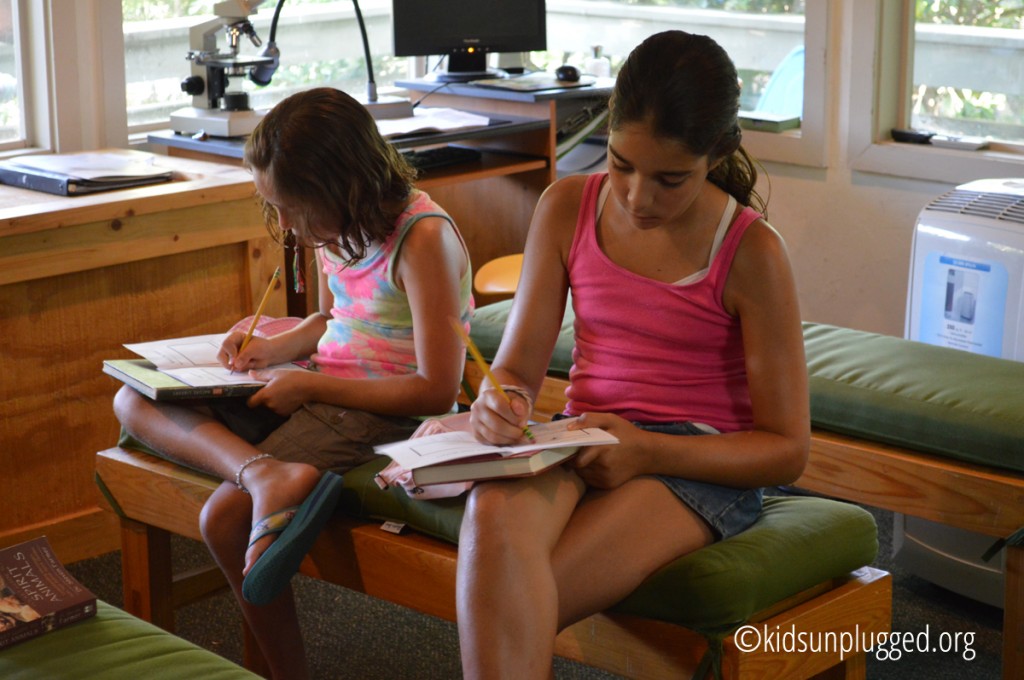
After spending some time exploring the animal exhibits, including a large coppermouth snake that gave us all the willies, Juliana brought the kids into a classroom in the back of the nature center to start the session. Each child was given a journal to jot down some notes from Juliana’s mini-lesson and sketched their own animal totems after learning about some of the native island wildlife that inhabited Kiawah then and now. Juliana asked the kids to list some of the things that are essential to human survival and talked about what life would have been life for the Kiawah Indians. Armed with some background knowledge, the group headed outside for a walk around the park to investigate the ways the Native Americans on Kiawah would have used the resources around them in their daily lives.
Juliana was extremely knowledge about about the island’s plants, animals and insects and we stopped numerous times along the way to inspect 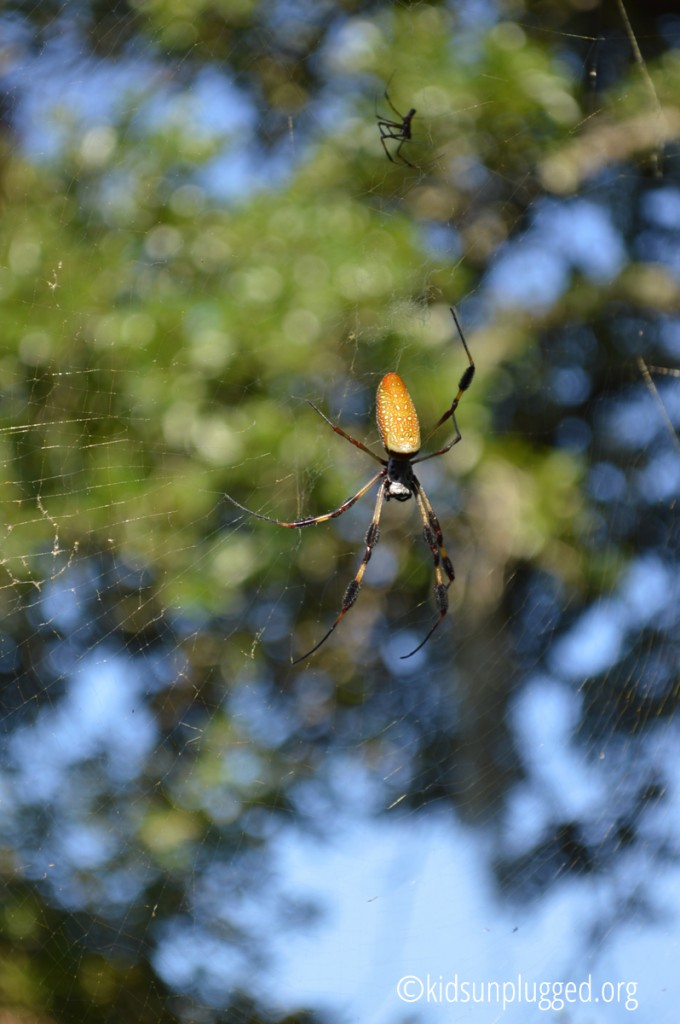 tree bark for evidence of woodpeckers, learn about how early Colonial era settlers might have used wax myrtle, and examine the work of a golden orb silk spider with a web so strong it was once used for catching fish. As we headed toward the path to the beach we came up with ways the fronds of the palmetto tree could be used (and learned that palmetto bugs are really just big cockroaches!), learned how to recognize the all-important, fibrous yucca plant, and sniffed the spicy leaves of a native red-bay tree.
tree bark for evidence of woodpeckers, learn about how early Colonial era settlers might have used wax myrtle, and examine the work of a golden orb silk spider with a web so strong it was once used for catching fish. As we headed toward the path to the beach we came up with ways the fronds of the palmetto tree could be used (and learned that palmetto bugs are really just big cockroaches!), learned how to recognize the all-important, fibrous yucca plant, and sniffed the spicy leaves of a native red-bay tree.
During our beach stroll we were treated to a nice breeze while getting to see some of the approximately 100 sea turtle nests that were marked and protected. Each nest was covered in mesh, staked and dated, and had a flag that would tilt forward indicating movement below telling the naturalists that the eggs were getting ready to hatch. The rooms at Kiawah’s Sanctuary Hotel all have thick blackout curtains on the windows and guests are encouraged to keep them closed at night during both nesting and hatching season as artificial light can interfere with the mother’s egg laying as well as the hatchlings’ safe return to the sea after emerging from their nests–both of which are nocturnal activities.
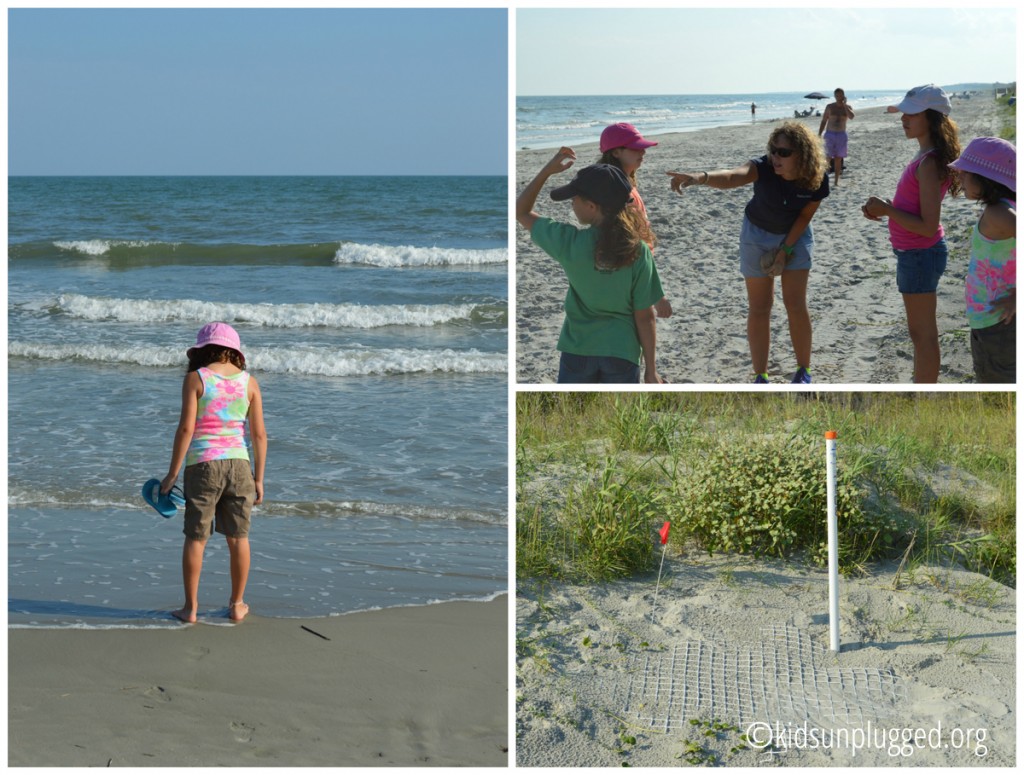
We returned to the Nature Center classroom for some good, cold water before settling down back outdoors for the final activity. Juliana had several yucca leaves soaking in a large bucket of water and a pile of oyster shells. The oyster shells, which we learned earlier during our Pluff Mudd Paddle were quite sharp, had once been used as knives and scrapers by the Kiawah Indians. The kids were each given a shell and a long yucca leaf and Juliana demonstrated how the Native Americans would have used the shell to scrape the soaked leaf clean of its green coating to reveal the fibrous strands of its inner core.
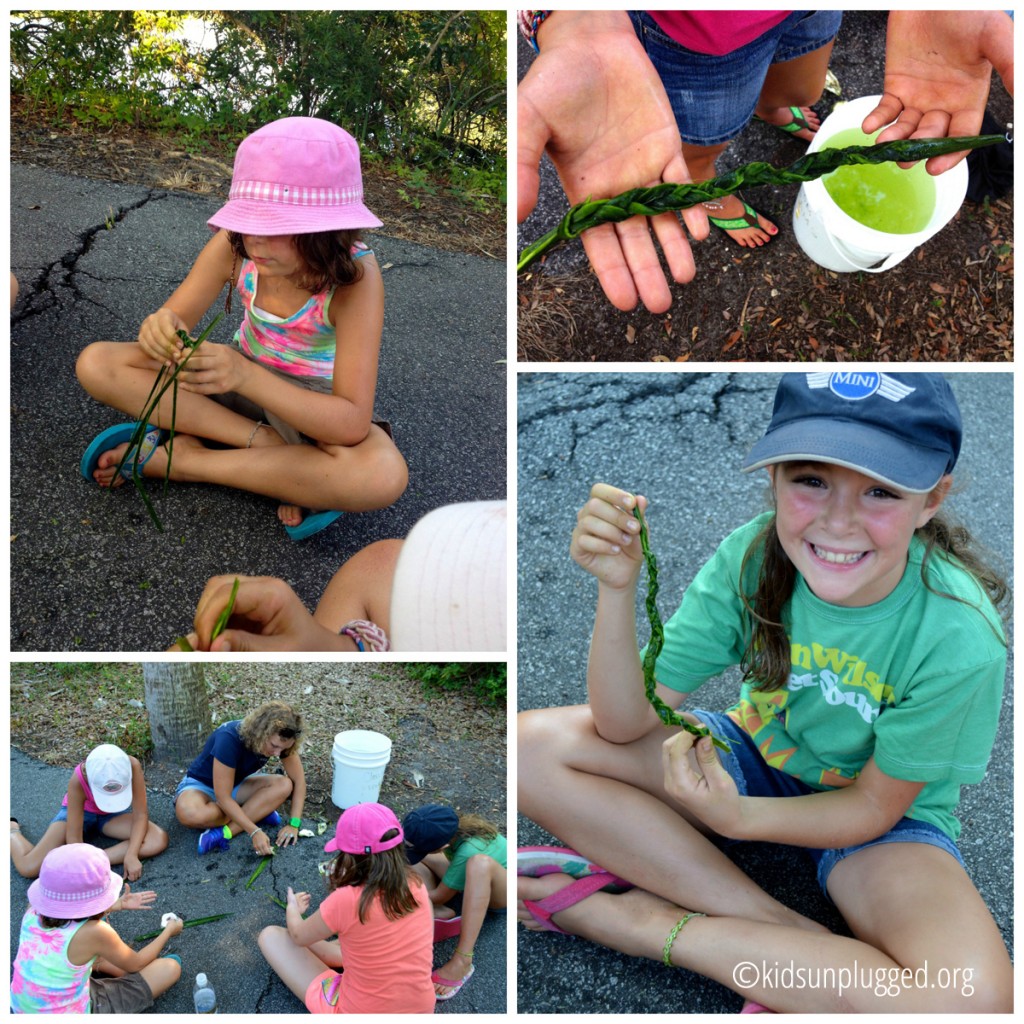
The kids scraped away and soon thinned their leaves enough to separate them into three strands to be braided. The Kiawah Indians would have used yucca in this way to make rope and cording that could then serve many purposes. It was fun to watch the kids struggle with this activity as doing so helped them to see how incredibly challenging it must have been to have to create from nature every item one needed to perform the simplest of tasks.

I wish we could have participated in all five of the Jr. Naturalist sessions the Kiawah Nature Program offered, as the short time we spent with Juliana was excellent–and lots of fun. As a teacher I am always internally evaluating the educators, camp counselors or activity leaders at resort kids’ clubs and programs and I was very impressed by Juliana’s skill and enthusiasm as a teacher and wonderful energy interacting with the kids.
Kiawah Island Resort, which is a member of the Preferred Family collection of hotels, is home to a bounty of outdoor education opportunities from animal study to marsh ecology and more. If you have the chance to participate in any of their fabulous programs, you should certainly do so. Your kids will come away far more knowledgeable and passionate about the natural world than they were when they arrived!
Disclosure: We were hosted by the Kiawah Resort and our accommodations, dinners and activities were complimentary. As always, all of the opinions in this post are my own.
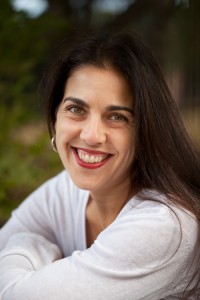
Oh, I can’t wait to get here!